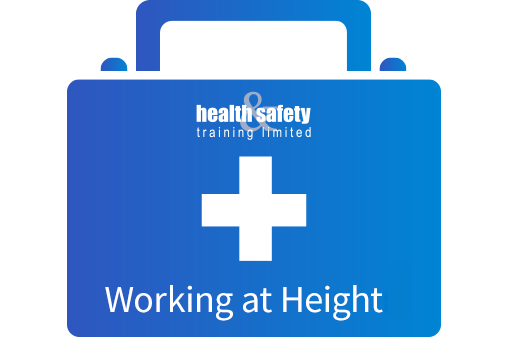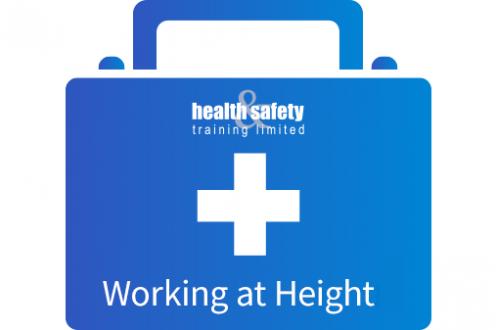The Health and Safety Kit: Working at Height
 Working at a height is one of the most dangerous situations for many industrial and construction workers, as falls from equipment and machinery remain one of the biggest causes of serious injury and death in the UK.
Working at a height is one of the most dangerous situations for many industrial and construction workers, as falls from equipment and machinery remain one of the biggest causes of serious injury and death in the UK.
As such there is a whole area of health and safety law focused on working at heights that affects any worker in any workplace that, if no precautions were in place, could fall a distance that could cause an injury.
The Hazards
A fall of any distance can cause injury, even if you just slip from the first rung of a ladder, but many jobs – especially in the construction, warehousing and loading industries – require workers to perform tasks at greater heights that could cause severe injury or even death if a fall occurs.
The main hazards are:
- Falling from machinery or equipment
Whether it’s a ladder, cherry picker or industrial crane, if workers are expected to work from machinery that lifts them from the ground, there is always a risk that they could fall.
- Falling through fragile surfaces
Construction and demolition workers often work in dilapidated buildings, which could have unsafe floors and fragile ceilings that could collapse under the weight of workers and equipment.
- Falling through gaps or openings in floors
Similarly, if a building is being constructed or renovated, there is a chance that part of the floor will be removed to be replaced with newer flooring, or to allow equipment and materials to be passed up through the building.
- Faulty Safety Equipment
In any situation that involves working at heights, workers should be supplied with safety equipment to stop them from falling – this includes safety rails on mobile elevated working platforms and harnesses. It’s essential these safety precautions are inspected and checked for faults that contribute to a fall.
The Law
In any workplace, the Health and Safety at Work etc. Act 1974 governs the safety of workers. Ultimately, the responsibility for ensuring the safety of employees, visitors and any members of the public from hazards lies with the employer.
Alongside this legislation is the more specific Work At Height Regulations 2005 that aims to prevent fatalities or injuries caused by a fall from height. As an employer you have a duty to ensure height activities are properly planned, supervised and undertaken by trained and competent people.
Employees also have a more generalised duty to take reasonable care of themselves as well as any other workers or people in the surrounding areas who could be directly or indirectly affected by their actions. They must also work with their employer to uphold their health and safety policies.
Your Responsibilities
Employers, or those in charge of managing the work at height, must always begin by assessing the risks, and where reasonably practicable they must:
- Avoid work at height by doing as much as possible from ground level.
- If work at height can’t reasonably be avoided, precautions must be taken to prevent falls by using the right equipment and safety equipment that has been properly inspected and maintained.
- Minimise the potential fall distance by working from existing, safe platforms or equipment, and ensuing workers can access them safely.
- Ensure workers are properly trained to use safety equipment and machinery, and to ensure they understand the risks involved and how to avoid them.
When planning work, there are a number of things an employer or manager should consider, these include:
- Checking the weather and if high winds, rain or other conditions are forecasted that could present a hazard, ensure work is postponed or changed to take account of the more dangerous working conditions.
- Checking the location of the work planned before each shift to ensure nothing that could present a hazard has materialised e.g. broken tiles.
- Taking steps to stop materials or tools falling, such as safety nets, or enforce exclusion zones to keep people out of potentially dangerous areas.
- Plan for emergencies and create a rescue plan in case of an accident or fall.
- Ensure all employees working at heights are aware of health and safety policies, risks and hazards, how to avoid an accident and what to do in an emergency.
Available Training
As an employer, the biggest thing you can do to protect your workers from injury, and protect yourself from the legal repercussions of a badly managed workplace, is to ensure your workers are well educated in their jobs.
Getting them the right training to provide the right skills, knowledge and experience, and ensuring trainees they are always competently supervised, is essential.
Cherry Picker/Scissor lift – Using a mobile elevated working platform presents a whole series of hazards that could lead to a serious injury, or even fatality. A course designed to give the users a thorough understanding of the controls, instrument and limitations of use, as well as the importance of safety checks, servicing and regular inspections will give workers required to work at heights the competence to carry out their jobs safely and legally.
Safety Harness Use & Inspection – The other most important aspect of safety at heights is safety equipment, but simply supplying the equipment is not enough. Training in how to identify the best safety harness for the job and the relevant legislation will give them a thorough understanding of theory behind the equipment. They should also be trained to inspect, maintain, fit and use the harnesses appropriately to prevent falls.
Here at Health and Safety Training Ltd, we have been providing training to keep you, your workers and anyone else visiting your site safe from potential hazards for many years. No matter what your industry, or the equipment you use, we can tailor our training courses to satisfy your requirements completely.
New and Improved Website! Becoming a Forklift Trainer





